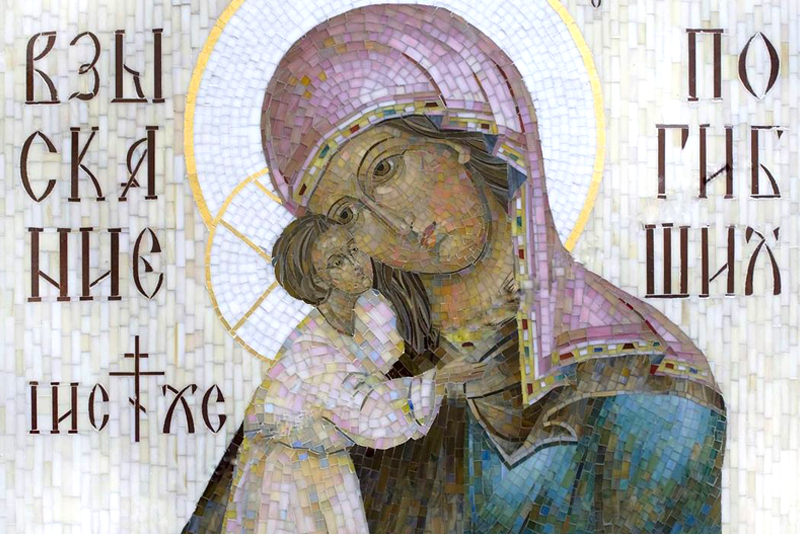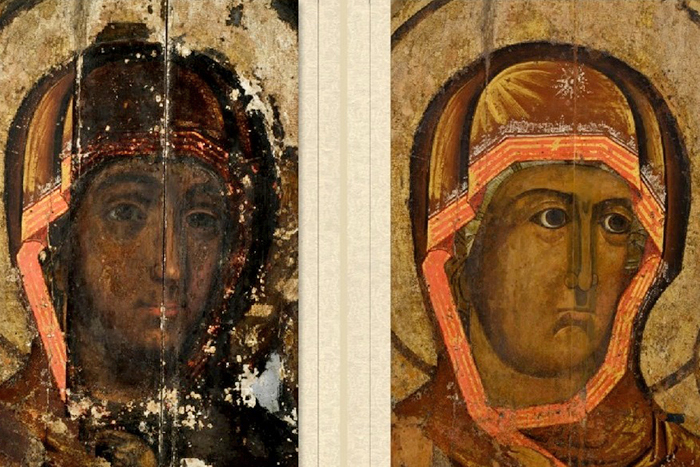
It was 1748. The serfdom in Russia had not been abolished yet, and the peasants were under the control of their masters. However, everyone perceived their destiny in their own way: some saw God’s will in it, while others protested and hated their masters.
There were various sentiments among the servants of Vasily Kondratyevich Khitrovo, a Kaluga landlord from an old noble family who lived in his manor in the village of Tinkovo. On a hot summer day, two female servants were sent to the attic to sort through old things. Eudoxia, being a wilful girl, began to complain and scold the masters. She kindled her indignation and soon switched from muttering to loud shouting. She even used some dirty words. Her friend was telling Eudoxia to be quiet, while she continued to unpack things until she found an image wrapped in a piece of canvas cloth. There was a woman in a dark dress painted on it, looking like a nun. She was holding an open book in her hands.
“Stop it! Stop it! Stop making God and this abbess angry, or she will be angry with you,” Eudoxia’s friend said.
Instead, Eudoxia burst out with insults and spat on the image. At the same moment she collapsed and lost consciousness. The astonished maid rushed to tell everyone in the house about the incident.
That same night, the Virgin Mary appeared to the parents of the girl who had blasphemed against the Queen of Heaven. She told how their daughter mocked her and blasphemed against the icon. The Mother of God ordered them to hold a moleben in front of the icon, and to sprinkle the girl with the water consecrated during it. So they did. Eudoxia came to her senses and felt well.
Vasily Kondratyevich Khitrovo reverently brought the icon to his rooms. They started praying in front of it. Some sick people were healed. These cases became known in the church of Kaluzhka village, where the image of the Mother of God was later transferred. For some time the icon stayed in the parish church in honor of the Nativity of the Most Holy Mother of God, and they made a replica of it.
Soon the Virgin Mary showed mercy and intercession to the entire population of Kaluga twice through her wonderworking icon. An epidemic of plague began here in 1771. A lot of people, as well as whole families, died. They decided to bring the wonderworking icon of the Mother of God from Kaluzhka. The whole of Kaluga took to the streets with a religious procession. A citywide moleben was served, and the disaster subsided – the epidemic ceased. Shortly afterwards, the icon was moved to the Kaluga Cathedral. This miracle is commemorated on September 2.
The merciful Heavenly Mother made her second intercession in 1812 during the Patriotic War. The French were moving towards Kaluga, there were clashes near Maloyaroslavets. Suddenly they began to lose their power. As Napoleon’s soldiers later recalled, a light-bearing Virgin appeared in front of them, surrounded by men in bright robes. She stood in the air and looked at them menacingly. Kaluga was saved, and thus the second celebration in honor of the wonderworking icon of the Mother of God of Kaluga was established on October 12.
87 years later, a cholera epidemic erupted in Kaluga. The City Duma decided to walk around the city with the wonderworking icon of the Theotokos. Then again, the inhabitants were saved. The commemoration of this miraculous event was established on July 18 in gratitude to the Mother of God for the deliverance from the scourge.
Another celebration in honor of the Kaluga icon of the Mother of God is held on the second Sunday after the feast of the Holy Trinity.



